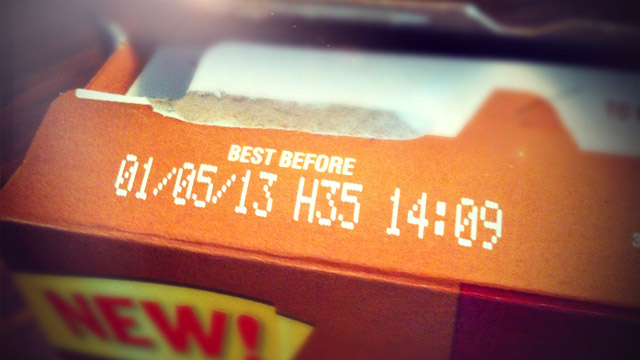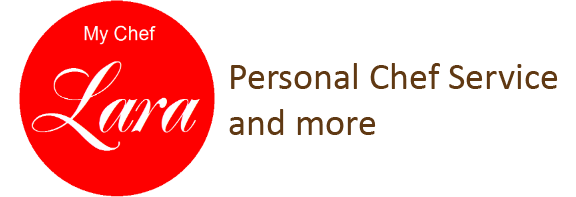
I normally open the fridge, pull out any of the questionable items, check for fur, and if there isn’t any, I ask, “Lara? Will you please sniff this?”
This is not, however, the approved method of checking for freshness. The approved way lies in a voluntary system of labeling.
Yes, voluntary. The only items required by federal law to be labeled for expiration are infant formula and some baby foods; some states also mandate pulling dairy from store shelves on the expiration date.
Learn the Lingo of “Dates”:
- “Expiration Date” refers to the last date a food should be eaten or used. Last means last — proceed at your own risk.
- “Sell by” date. The labeling “sell by” tells the store how long to display the product for sale. You should buy the product before the date expires. This is basically a guide for the retailer, so the store knows when to pull the item. This is not mandatory, so reach in back and get the freshest. The issue is quality of the item (freshness, taste, and consistency) rather than whether it is on the verge of spoiling. The “sell by” date is the last day the item is at its highest level of quality, but it will still be edible for some time after.
- “Best if used by (or before)” date. This refers strictly to quality, not safety. This date is recommended for best flavor or quality. It is not a purchase or safety date
- “Born on” date. This is the date of manufacture and has been resurrected recently to date beer. Beer can go sub-par after three months
- “Guaranteed fresh” date. This usually refers to bakery items. They will still be edible after the date, but will not be at peak freshness.
- “Use by” date. This is the last date recommended for the use of the product while at peak quality. The date has been determined by the manufacturer of the product.
- “Pack” date. You will find this one on canned or packaged goods, as a rule, but it’s tricky. In fact, it may be in code. It can be month-day-year-MMDDYY. Or the manufacturer could revert to the Julian calendar. January would then be 001-0031 and December 334-365.
How Long Are Foods OK to Eat? (some basic rules)
- Milk. Usually fine until a week after the “Sell By” date.
- Eggs. OK for 3-5 weeks after you bring them home (assuming you bought them before the “sell by” date).
- Poultry and seafood. Cook or freeze this within a day or two.
- Beef and pork. Cook or freeze within three to five days.
- Canned goods. Minumum of 18 months
Food Safety Tips
Since product dates don’t give you a true guide to safe use of a product, here are some other tips from the U.S. Department of Agriculture Food Safety and Inspection Services:
- Purchase the product before the date expires.
- If perishable, take the food home immediately after purchase and refrigerate it promptly. Freeze it if you can’t use it within times recommended.
- Once a perishable product is frozen, it doesn’t matter if the date expires because foods kept frozen continuously are safe indefinitely.
- Follow handling recommendations on product.
If you want to know how long any food item or beverage can be safely kept and what the best way to store it is, here is a link to an amazing database with all of the information you need: http://www.stilltasty.com





